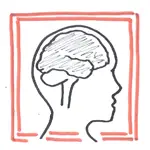
Overview Alcohol dependence is the clinical term used to describe a person who has become addicted to alcohol. Dependent drinkers have typically lost control of their drinking, may experience withdrawal symptoms on cessation of intake. Ethanol is the most widely used CNS depressant. It is rapidly absorbed from the stomach and small intestine and distributed in total body water
Alcohol Intoxication sign and symptoms becomes more dangerous as blood alcohol increases
Complications of alcohol use
| Wernicke's Triad: Confusion, Cerebellar ataxia, abnormal eye movements with opthalmoplegia. |
| Korsakoff's Syndrome is characterised by anterograde and retrograde amnesia |
| Stages Of Change | |
| Pre-contemplation | |
| Contemplation | |
| Preparation | |
| Action | |
| Maintenance | |
| Relapse | |
Management of alcohol dependence
| Side note Without pharmacotherapy, the majority (75%) will relapse within the first year. |
| Pharmacology Naltrexone inhibitis effects of endogenous opioids at mu receptor sites (anti-craving agent). Side effects: nausea, diarrhoea, fatigue, headache, hepatotoxicity. Contraindications: pregnancy, liver disease, advanced renal disease, chronic pain* |
| Pharmacology Acamprosate inhibits excitatory glutamates at NMDA receptor (anti-craving agent). Side effects: Diarrhoea, skin eruptions, mild sedation is occasionally reported. Contraindicated: pregnancy |
| Pharmacology Disulfiram inhibits aldehyde dehydrogenase at the liver. This causes the hangover feeling due to accumulation of aldehyde. Side effects: Drowziness, pschotic reactions, peripheral neuropathy, optic neuritis, hepatitis, impotence, dermatitis, cardiovascular events. Contraindications: advanced renal and liver disease, pregnancy, drinking in the last 24hrs. |
Alcohol Overdose can be life-threatening and is a differential diagnosis with someone presenting with abnormal mental states, confusion and ataxia/coma. The person may also present with an underlying medical or surgical condition which is missed.
Management
Alcohol Withdrawal can occur within hours to days after heavy use and can include elevated vital signs, tremor, transient hallucinations, anxiety, and seizures. The criteria (and symptoms) of alcohol withdrawal are identical to those for sedative-hypnotic withdrawal.
The treatment of choice for alcohol withdrawal is benzodiazepines. Anticonvulsants can also be used. Should not use antipsychotics. Benzodiazepines not dependent on liver function, such as lorazepam, are often preferred in the treatment of alcohol withdrawal.
| Delirium Tremens (severe alcohol withdrawal): a syndrome associated with the abrupt discontinuation of alcohol in a chronic abuser, carries a high mortality rate if not promptly identified and treated. |
| Watch Alcohol Withdrawal (Delirium Tremens) |
Overview The World Health Organization recognises smoking as a major cause of many chronic disease. Smoking is a main risk factor for many pulmonary and cardiovascular disease and also cancers. Smoking contain nicotine, which is the actual addictive agent and quite harmless. The harmful effects of smoking comes from the other agents which are added into the cigarettes. nicotine is a fast-acting drug with a short activity.
Signs and Symptoms of Smoking
Complication of smoking
Management
| 5As for assessing intervention | |
| Address | The patients agenda |
| Assess | The reason for quitting (current and past attempts) |
| Advice | Personalised message-coping stratgies |
| Assist | Tips or quitting, medication, therapy |
| Arrange | Follow-up, review |
| Pharmacology Bupropion is an antidepressant that affects norepinephrine and dopamine systems by increasing its release into the synaptic cleft. Its effectiveness in smoking cessation is independent of its antidepressant effects. Side effects include insomnia, agitation, and, rarely, seizures. Contraindication: seizure or history of seizure, central nervous system tumour, abrupt alcohol or benzo withdrawal, eating disorders, use of monoamine oxidase inhibitors in the last 14 days. |
Nicotine withdrawal is defined as occurring where abrupt cessation of nicotine use, or reduction in the amount of nicotine use, is followed with the signs of withdrawal in 24hours:
Overview Seeking the relief of pain is one of the most common reasons for patient visit. Prescription drug abuse is a growing problem, and accidental deaths from use of oxycodone, hydrocodone, and morphine, among others, are increasing. Seizures may occur in patients with renal failure because of the action of the morphine metabolite morphine-3-glucuronide. Treatment of chronic, noncancer pain using opioids remains controversial. However, treatment of acute pain, or pain in patients with a terminal illness, is generally medically necessary
Opioids are drugs that act on opioid receptors (Mu, kappa, lamba). Opioids can be:
Opioid agonist drugs have a range of pharmacological actions:
| Side note Patients who are opioid tolerant are likely to require higher than usual doses of analgesic drugs to achieve reasonable levels of pain relied |
Treatment for dependence
Non-pharmacological treatment
| Watch Opioid Overdose |
Opioid Withdrawal Signs
Opioid Withdrawal Signs
Overdose Benzodiazpines are effective anxiolytic medications. They are also effective amnestic agents, especially in high doses. Benzodiazepine users, in general, may be classified either as having therapeutic dependence" or as being polydrug users.
Benzo intoxication
Management of Benzodiazepine dependence
Overdose
Management of Benzodiazepine Overdose
Therapeutic dependence is best managed by very slow withdrawal supervised by the patients general practitioner. Benzodiazepine withdrawal is usually mild. Withdrawal onset occurs 2-5 days after stopping, reaching a maximum on 7-10, and usually abating by the end of the second or third week. The complications are the development of delirum and seizures.
Bezodiazepine Withdrawal
Withdrawal management
Overview Prescription shoppers go from doctor-to-doctor seeking prescriptions for drugs for nonmedical purposes where each doctor is unaware of supply by the others. The drugs are sought for a range of reasons. These include euphoria, and self medication of pain, anxiety and depression, but in some cases they are sought for amelioration of heroin withdrawal symptoms or purely for financial gain.
| Definition Prescription shopping is when a patient unknowingly or deliberately seeks/obtains more medicine than they need by visiting many doctors without telling them about their other consultations Misuse (noncompliant use): The intentional or unintentional use of a prescribed medication in a manner that is contrary to directions, regardless of whether a harmful outcome occurs. Physical dependence: A state of adaptation manifested by a drug class-specific withdrawal syndrome that occur by abrput cessation of a drug, rapid dose reduction, adminitration of an antagonist Withdrawal: A variety of unpleasant symptoms (e.g., difficulty concentrating, irritability, anxiety, anger, depressed mood, sleep disturbance, and craving) that occur after use of an addictive drug is reduced or stopped |
Reasons for seeking more medicines than they need
Drugs most commonly subject to misuse
Suspicion of prescription shopping
Overview of addition medicine. This section is a brief introduction to substance abuse, followed by section that look at specific drugs of addiction.
| Definition Substance Misuse: Consumption above designated low risk levels Substance Abuse: repetitive substance use resulting in social complications (financial, occupational and legal) Substance Tolerance: Defined by either of the following: a need for markedly increased amounts of the substance to achieve intoxication or desired effect or markedly diminshed effect with continued use of the same amount of the substance. Substance Dependence: Cluster of psychological, behavioural and cognitive syndromes that comprise an inner drive to repetitive substance use. Dependence is a clinical syndrome in which there is a prominent physiological drive to consume a substance Withdrawal: Neurons adapt to the chronic presence of a substance. Cessation of substance results in abnormal neuronal function and therefore symptoms. Hazardous substance use: Repetitive use at levels that place a person at risk of psychological or medical harm Harmful substance use: Repetitive pattern of use that causes actual physical (e.g. liver disease) or psychological harm (e.g. depression, anxiety) |
Risk Factors
Investigation
| URINE TOXICOLOGY SCREENING |
| Drug and duration of detectability in urine |
| Amphetamine 2-3 days |
| Cocaine 2-3 days |
| Weed 1-7 days (light test) 1 month for chronic users |
| Opiates 1-3 days |
| Alcohol |
Clinical Presentation
